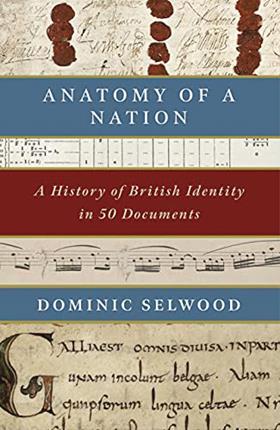Anatomy of a Nation: A History of British Identity in 50 Documents
Dominic Selwood
£30, Constable
★★★★✩
Seven pillars of ink appear to rise up on the faint reproduction of The High Court of Parliament, Death Warrant of King Charles I (1649), giving this document stowed in the House of Lords archives a sinister aspect. This is one of 50 documents that historian and barrister Dominic Selwood uses as a leitmotif to explore British history from pre-Roman times to today.
In the case of King Charles’s death warrant, Selwood explains, that of the original 159 judges who made up a court instituted by the Rump Parliament to try Charles for treason, after the guilty verdict ‘more judges melted away… and only 59 appeared on 29 January to sign Charles’s death warrant’.

The struggles of another king led to the Charter of Runnymede (Magna Carta, 1215), cited as emblematic of ‘democratic principles’. In 1214, King John was threatened with the barons’ ‘Army of God’ ‘if he did not rein in his despotic behaviour’. Selwood chronicles the charter’s original incarnation, ‘which stipulated that a panel of 25 barons would monitor every decision he made’, and how royal chancery scribes ‘issued around 40 engrossments of what had been agreed – the Charter of Runnymede’, and how Henry lll finally split the document into the Charter of the Forests and Magna Carta. One of the joys of Selwood’s writing is his cogent analysis. Here, in a chapter entitled ‘A House of Devils’, he asserts, ‘those who agreed [the charter] at Runnymede were not democrats, and would be mystified by its modern status as a bulwark of democratic principles’.
The diversity of documents from across the ages in Selwood’s history makes this an absorbing read. Mervyn Griffith-Jones QC’s opening speech from the Lady Chatterley’s Lover censorship case of 1960, papers from Mr Justice Byrne’s prosecution of William Joyce – Lord Haw-Haw – in 1945, and the ballot paper used in the Brexit referendum, are examined, as are the graphic design of the Sex Pistols and Anglo-Saxon poetry.
The exhaustive bibliography of sources attests to the depth of Selwood’s research, while the appendices include ‘The Many Names of Britain’ and ‘A Note on the Changing English Alphabet’, Britain’s kings and queens from the House of Wessex in 927 to Elizabeth II, and a list of prime ministers from Robert Walpole (1721) to Boris Johnson. An innovative history eruditely told.
Nicholas Goodman is a sub-editor at the Law Society Gazette






























No comments yet